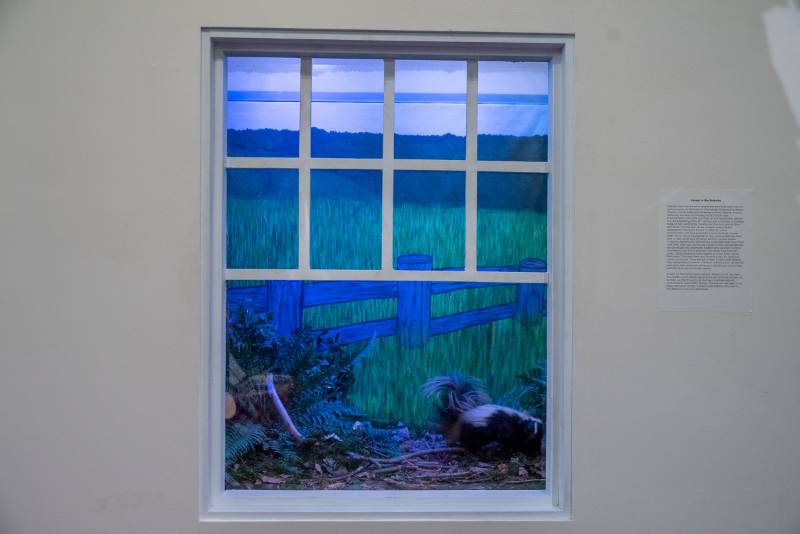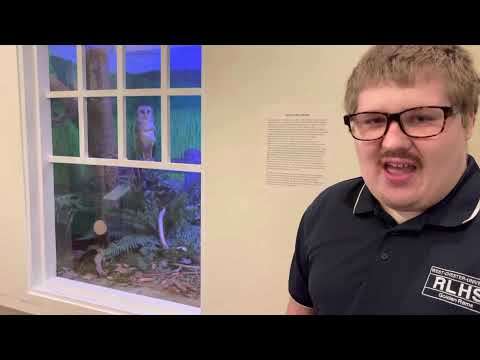Sunset in the Suburbs
Humans have continued to modify and encroach upon natural environments, as illustrated in this habitat diorama of a historic Chester County backyard bordering a forest. Chester County, especially the land surrounding West Chester, was predominantly rural until suburban sprawl significantly altered it in the beginning of the 21st century, and continues to increase today. It has significantly transformed the land, and its flora and fauna. For example, broad-winged hawks (Buteo platypterus) have been forced to adapt to human environments and local populations have declined in some areas due to forest fragmentation. But some wildlife has been able to take advantage of human activity. Striped skunks (Mephitis mephitis) are omnivorous scavengers that have fared well. They often get into humans’ trash as their natural habitats are developed and urbanized. Eastern grey squirrels (Sciurus carolinensis) can live in suburban and urban environments easily, utilizing backyard bird feeders as a new food source. Barn owls (Tyto alba) have also found success by nesting in human structures. There are still threats to barn owls despite their adaptations, however. Chemical rodent poison can kill the barn owls, who otherwise serves as a natural pest control that primarily hunt and consume rodents.
Except for the Eastern grey squirrel climbing to its tree nest, the wildlife in this habitat diorama are all nocturnal animals. As humans, we don’t have to let darkness overtake natural environments and wildlife forever. The sun can rise again if we make conscious choices towards sustainability, and work to find balance in our own backyards.
Curated by Foster W. Krupp and Anissa Kunchick. Background designed by Ashley Wallen. Specimens on loan from the Delaware Museum of Natural History.



